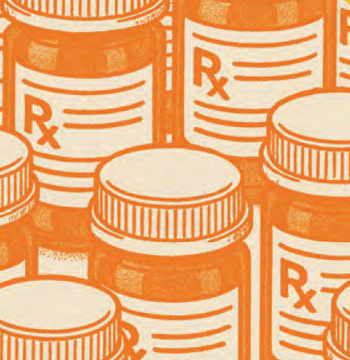
Sexually Transmitted Infections (STI) Awareness Month: A Call for Education, Testing, and Prevention
April marks STI Awareness Month; guidelines decreasing the incidence of chlamydia and syphilis, future work needing to be done with regards to doxy-PEP, an increase in STIs during the pandemic, and more from this year by Contagion.
A Strategy for Reducing STIs Through Implementing Doxycycline Post-Exposure Prophylaxis
The Department of Public Health in San Francisco (SF) distributed guidelines through community and public health channels, underscoring the use of doxy-PEP as a strategy for reducing bacterial STIs among men who have sex with men (MSM) and transgender women (TGW). The introduction of SF doxy-PEP guidelines and their early adoption in high-volume clinics correlated with ongoing reduction in reported cases of chlamydia and early syphilis, but not gonorrhea, among MSM/TGW across a span of 13 months. Additional elements, such as variations in screening habits and sexual behaviors may have influenced the trends.
Read more:
Doxy-PEP to Prevent Bacterial STIs: Proceed but With Caution
Bacterial sexually transmitted infections (STIs) including gonorrhea, chlamydia, and syphilis continue to occur at an alarming rate with an estimated 370 million annually worldwide. The success of HIV pre and post-exposure prophylaxis (PREP and PEP respectively) may in fact contribute to the practice of condomless sexual intercourse and result in the transmission of bacterial STIs. An attempt to piggyback on the success of HIV PREP and PEP with doxycycline, an agent active against the major causes of bacterial STIs, has been underway. In a recently accepted manuscript in Clinical Infectious Disease, Hazra, and colleagues nicely outlined the evidence to date regarding doxycycline PEP (dPEP) and the remaining questions to be answered.
Read more:
Increase in Incidence Rates of STIs in Adolescents During the COVID-19 Pandemic
In the US, nearly 1 in 4 female adolescents and young adults test positive for sexually transmitted infections (STIs) annually, a statistic made even more troubling by the fact that these young women often avoid health care due to cost, transportation, and confidentiality concerns. With more than 33% of adolescents reporting no primary care provider, this demographic often relies on emergency departments and inpatient settings for their health care needs. With the COVID-19 pandemic having decreased healthcare access in the US, adolescents at risk for sexually transmitted diseases were further compromised. At the time, health experts warned of adverse outcomes on sexual and reproductive health for adolescents.
Read more:
COVID-19 Vaccination Rates Show Differing Patterns in People with HIV vs People Without
A study focused on the vaccination rates among individuals during the COVID-19 pandemic, specifically comparing people with HIV (PWH) to people without HIV (PWoH). PWH was less likely to complete the primary vaccination series but more likely to receive booster doses compared to PWoH. The lower vaccination rates among specific subgroups of PWH underline the need for targeted interventions to increase vaccination uptake, especially considering their higher risk of comorbidities. However, the higher uptake of booster doses among PWH suggests that once initial hesitancy or barriers are overcome, this group may be more proactive or receptive to additional doses.
Read more:
CDC Report: Syphilis Incidence Rate Continues to Increase and Shows Rising Trend Over Several Years
The Centers for Disease Control and Prevention released its annual report, Sexually Transmitted Infections (STI) Surveillance, 2022, which showed primary and secondary syphilis—the most infectious stages of the disease—increased 10 percent in 2022 alone and 68 percent since 2018. According to the report, syphilis cases (all stages and congenital syphilis) have increased 80 percent in the past five years. More than 3700 congenital syphilis cases were reported in 2022, reflecting a 937% increase in the past decade.
Read more:
Doxycyline Prophylaxis for STI in Women Confounded by Low Treatment Adherence
A trial of doxycycline postexposure prophylaxis (PEP) to protect against sexually transmitted infection (STI) in women was confounded by low adherence to the regimen, as well as high prevalence of tetracycline-resistant N gonorrhoeae in the studied population. The investigators had sought to follow on the previously reported success with doxycyline PEP (dPEP) in reducing STIs among men who have sex with men, with a trial in women, for whom they found a lack of data despite the need.
Read more:
Newsletter
Stay ahead of emerging infectious disease threats with expert insights and breaking research. Subscribe now to get updates delivered straight to your inbox.





















































































































































































































































































































